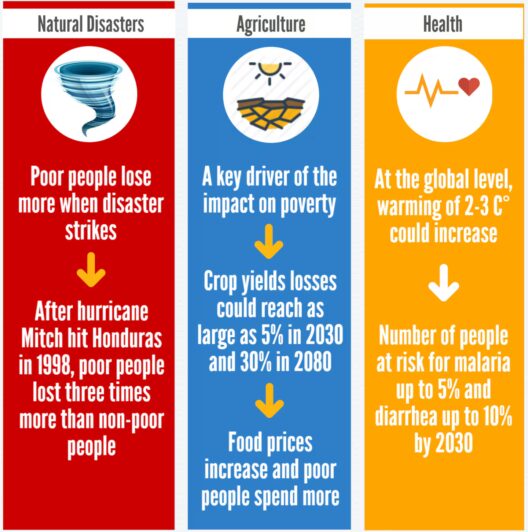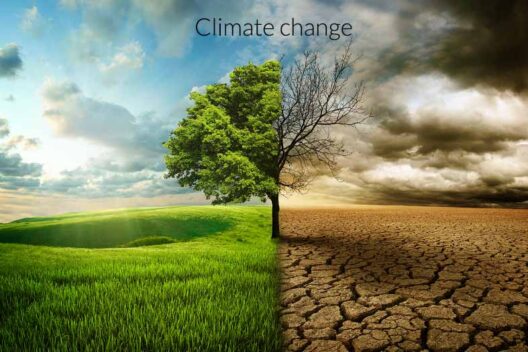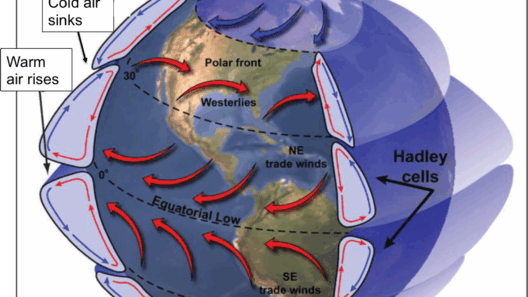As the climate warms, a pressing question arises: What will happen to the ocean, which is often considered the planet’s lifeblood? The ocean covers more than 70% of the Earth’s surface, playing a crucial role in regulating temperature, weather patterns, and supporting a myriad of ecosystems. However, the ominous specter of climate change looms large, threatening this vital resource. This article delves into the implications of global warming on oceanic systems, highlighting the challenges we face and the future we must navigate.
To begin with, the most immediate concern is the increasing temperature of ocean waters. Since the 1960s, ocean heat has remarkably doubled. This rise in temperature affects marine ecosystems profoundly, leading to phenomena such as coral bleaching. Coral reefs, often referred to as the ‘rainforests of the sea,’ rely on a delicate balance of temperature and salinity. When waters become excessively warm, corals expel the symbiotic algae living within their tissues, which not only gives them color but also provides essential nutrients through photosynthesis. The result is a white, bleached appearance. Should this trend continue, coral reefs may face widespread mortality, disrupting entire ecosystems that depend on them for habitat and sustenance.
Furthermore, the warming of the oceans has a cascading effect on marine biodiversity. Species that once thrived in specific temperature ranges are now being forced to migrate towards cooler waters, often towards the poles. This shift poses a significant challenge for the fishing industry, as many fish species that are staples of global diets will become less accessible. Additionally, species that cannot adapt quickly enough may face extinction, severely depleting biodiversity, and upsetting ecological balance.
In conjunction with temperature rise, we must also contend with the issue of acidification. The ocean absorbs approximately one-third of the carbon dioxide emitted into the atmosphere. As CO2 levels increase, so too does the acidity of ocean waters, a process referred to as ocean acidification. This alteration in pH levels has disastrous consequences for calcifying organisms such as mollusks, crustaceans, and corals, which rely on stable conditions to build their shells and skeletons. Prolonged exposure to acidic conditions can weaken these structures, making it challenging for these species to survive and thrive.
Moreover, the plight of marine life is compounded by the phenomenon of sea level rise, a direct result of melting glaciers and polar ice caps. As ocean temperatures rise, waters expand, contributing to higher sea levels. This rise threatens coastal communities, ecosystems, and infrastructure. The loss of mangroves and wetlands, integral to coastal protection and biodiversity, underscores the interconnectedness of human and ecological systems. Increased flooding and storm surges pose substantial risks to human settlements, potentially displacing millions of people and leading to economic instability.
Yet, it is not just the visible impacts we must consider. The deep ocean, often called the Earth’s last frontier, is also feeling the effects of climate change. As temperatures rise, stratification increases, disrupting the natural mixing of ocean layers. This can lead to diminished oxygen levels in deeper waters, creating dead zones where life cannot sustain itself. The loss of these habitats threatens not only the organisms that rely on them but also the broader marine food web that supports diverse life forms.
As we ponder the fate of the oceans, it is essential to recognize that the challenges posed by climate warming are not insurmountable. Mitigation efforts such as reducing carbon emissions, promoting sustainable fishing practices, and establishing marine protected areas can spearhead a positive direction. However, these measures require collective global action, cooperation, and a fundamental shift in how we interact with our oceans.
Picture a future where, instead of grappling with the repercussions of climate change, humanity celebrates flourishing blue ecosystems rich with biodiversity. What would it take to realize this vision? Engaging in policy reform, investing in renewable energy sources, and supporting organizations leading the charge for ocean protection are essential steps in this endeavor. A playful question arises: Can we summon the collective will to foster a symbiotic relationship between humanity and the ocean, or will we allow our actions to steer us toward a dystopian narrative dominated by decline?
It is imperative that society embraces the challenge that lies ahead. Ocean conservation cannot be a unilateral effort; it demands a cooperative model that integrates scientific expertise, technological advances, and community engagement. Grassroots movements can play a pivotal role in this transformation, educating individuals about the significance of ocean health and empowering them to take action. By fostering a culture of stewardship, each person becomes a vital conduit for change, rippling outward to inspire others.
Ultimately, the fate of the oceans hinges on our collective decisions and actions. As climate change continues to escalate, we stand at a crossroads. Will the ocean serve as a beacon of hope—a thriving, vibrant entity teeming with life—or become a symbol of neglect and loss? The responsibility lies within us all to rise to this challenge, to protect and rejuvenate the very essence of our planet that sustains life in all its forms. The opportunity for transformation is upon us; we must seize it before it fades away.






